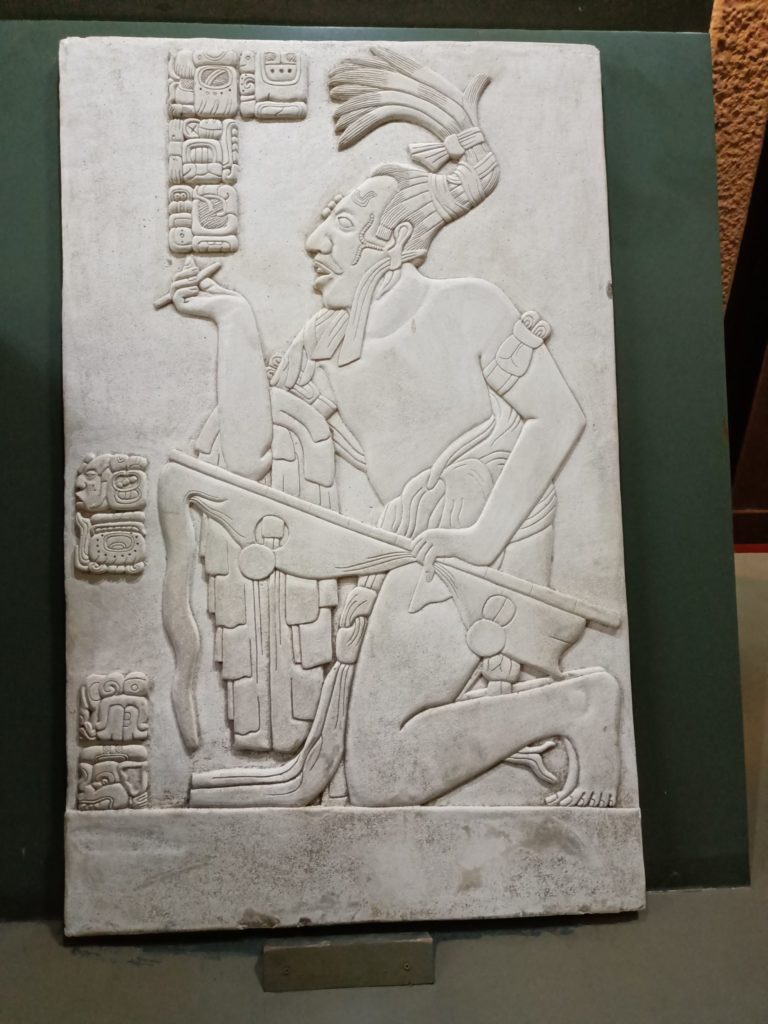Palenque is a beautiful archaeological site in the state of Chiapas, Mexico, which we visited last week.

It’s been over 30 years, but last week we visited Palenque, a beautiful Mayan archaeological site in the state of Chiapas, Mexico, for the second time. The slippery steps of the pyramids and the tree and vine covered mounds which are un-excavated structures were fun to climb years ago. The falls I’ve taken in recent years, just walking on dry sidewalks, gave me doubt that I would be agile enough to do much more than take a photo from below. Using the zigzag method that Robert showed me, I did slowly make it to the top, as you can see in the photo.

We hired a guide to show us the pyramids and to walk us through the forest.
Ricardo, pictured below, guided us at the site for the official two hour pyramid and selva (woods) tour. The selva tour takes the path through the forest behind the temple complex of Pacal and the Red Queen. The path weaves among structures which appear to be tall mounds, much larger than the restored pyramids. Lianas and gigantic trees whose roots penetrate the mounds conceal most of the walls and ceilings.

Ricardo showed us one of Palenque’s many springs.
In the selva, he guided us to a natural spring. Our guide claimed that fifty-six springs provided life-giving water to Palenque’s inhabitants. As we stood in the forest at the spring, we could easily imagine the sacred energy that the ancient Maya perceived there.

He also showed us the canals and explained how the Maya of Palenque made straight sided canals, lined them with a type of smooth stucco coating and roofed them with stone. In places, the roofed part is still intact and we walked on top of it.

We were quite impressed with the size of the freshwater canal. In ancient times, it had smooth plastered sides and a stone roof covering . Can you see, in the photo below, the remains of the solid top in the distance?

After our visit to the ruins and woods, we visited the site museum. The displays showcase the artifacts found in the pyramids. The large incense burners have faces of gods or a shaman. There are also the delicately modeled reliefs which were carefully removed from the pyramids’ walls.
